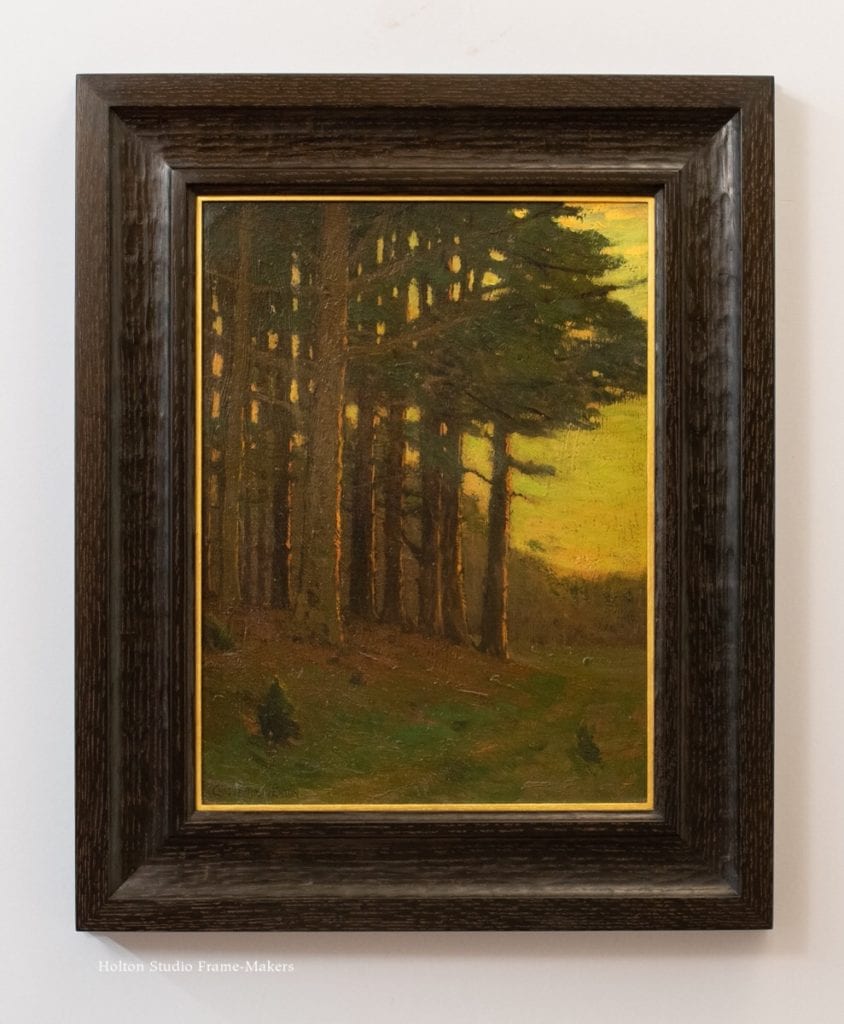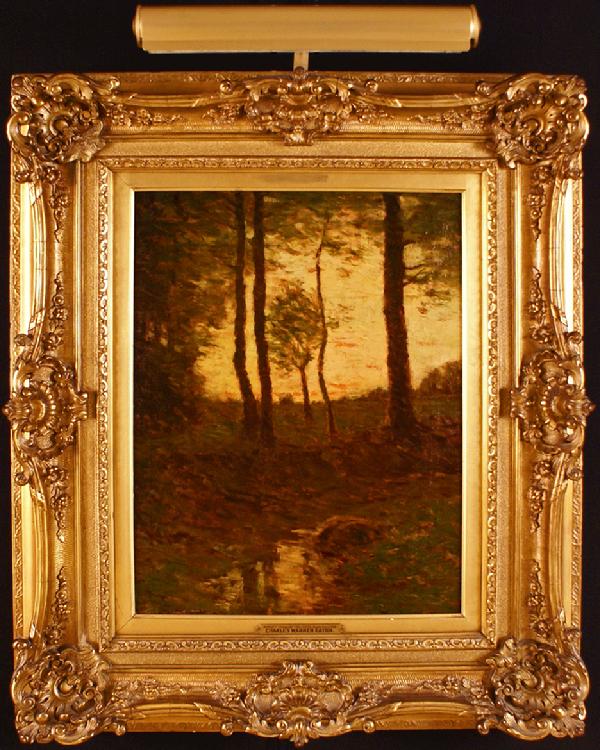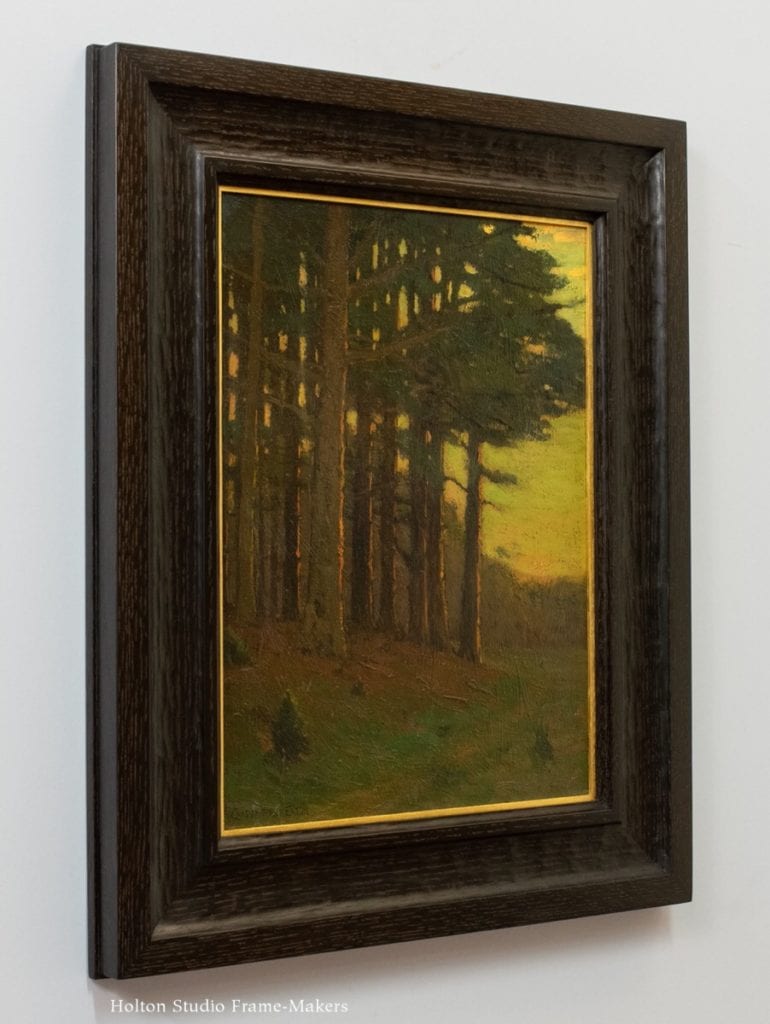Our friends at California Historical Design are offering this lovely oil, “Entrance to the Woods, Bloomfield NJ” (ca. 1910), by the significant East Coast tonalist painter Charles Warren Eaton (1857-1937). We framed the 16″ x 12″ painting in a 3″ wide carved scoop profile in quartersawn oak with Saturated Medieval Oak stain, and a 23 kt gilt slip. The shape of the frame enhances the perspective in the painting and reflects the light in similar fashion as the trees. The profile is comprised of two pairs of alternating complementary forms: raised flats which are not carved, and concave carved elements. The gilt slip not only repeats the play of light and shadow but provides emphasis ensuring the otherwise dark ensemble doesn’t get lost on the wall. I always feel that the slim gilt slips we frequently use enhance the window effect of the frame by giving a sense that the edge of the window frame is catching the light emanating from the painting. That’s certainly the case here as the slip echoes the narrow line of sun catching the right side of each tree trunk.
 The period in which tonalism arose and thrived—the late 19th and early 20th centuries—was one of great social disruption and discord. So it’s no surprise that painters responded with a painting style aimed at restoring some harmony to the world—or capturing nature’s harmony their age was losing sight of. Their ideals naturally led many tonalists, including San Franciscan Arthur Mathews and his certainly his teacher James McNeil Whistler, to embrace the art of the frame. The architecture of the frame was the painting’s first encounter with the larger architectural setting which these painters aimed to participate in in a humbler, more subordinate fashion than paintings of recent centuries had tended to do. But as the fate of another Charles Eaton painting shown at right demonstrates, the impressionist brushwork and spirit of simple rural scenes were often lost on the baroque, urbane tastes of galleries and collectors whose interests were not so much in the harmony of nature and the many and varied arts encompassed by architecture, but in paintings as singular and separate works of art turned into, regardless of artists’ intentions, eye-catching trophies.
The period in which tonalism arose and thrived—the late 19th and early 20th centuries—was one of great social disruption and discord. So it’s no surprise that painters responded with a painting style aimed at restoring some harmony to the world—or capturing nature’s harmony their age was losing sight of. Their ideals naturally led many tonalists, including San Franciscan Arthur Mathews and his certainly his teacher James McNeil Whistler, to embrace the art of the frame. The architecture of the frame was the painting’s first encounter with the larger architectural setting which these painters aimed to participate in in a humbler, more subordinate fashion than paintings of recent centuries had tended to do. But as the fate of another Charles Eaton painting shown at right demonstrates, the impressionist brushwork and spirit of simple rural scenes were often lost on the baroque, urbane tastes of galleries and collectors whose interests were not so much in the harmony of nature and the many and varied arts encompassed by architecture, but in paintings as singular and separate works of art turned into, regardless of artists’ intentions, eye-catching trophies.
The Montgomery Museum of Fine Art has a good introduction to Charles Warren Eaton and tonalism here.
« Back to Blog